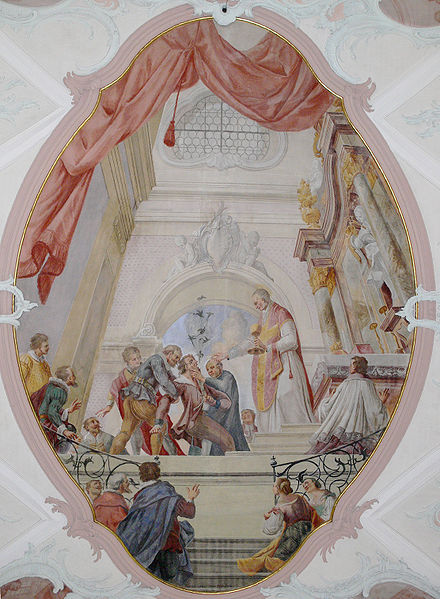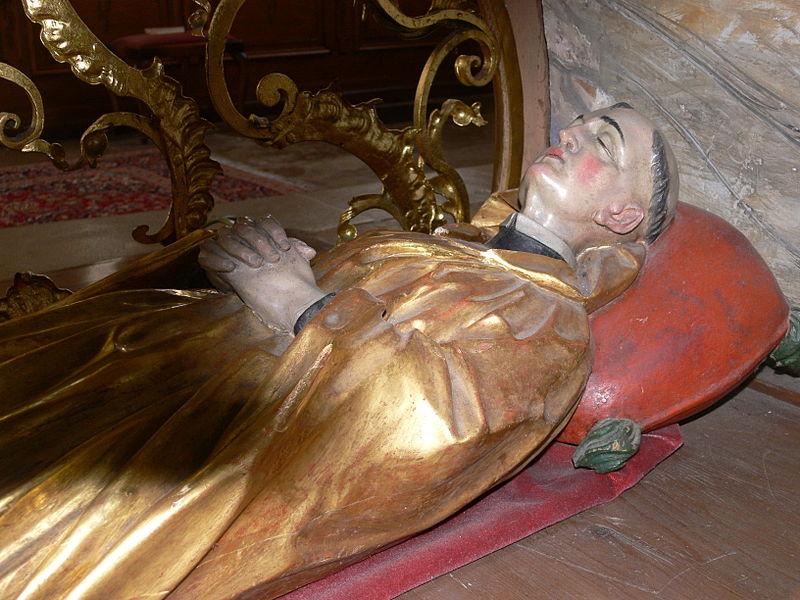St. Ulrich of Zell
(Wulderic; called also of Cluny, and of Ratisbon), born at Ratisbon, at the beginning of 1029; died at Zell, probably on 10 July, 1093. Feast, 14 July (10). Two lives of him are extant: the first, written anonymously c. 1109 by a monk of Zell at the request of Adalbert, a recluse near Ratisbon; the other, also anonymous, written between 1109 and 1130. Particulars of his life are also contained in his writings. His parents, pious and rich, were Bernhold and Bucca, niece of Bishop Gebhard II. Ulrich probably received his education at St. Emmeram, but in 1044 he was called to the court of his godfather, Henry IV, and acted as page to the Empress Agnes. Ordained deacon by his uncle Nidger, Bishop of Freising, he was made archdeacon of the cathedral. On his return from a journey to Rome he distributed his posessions to the poor, made a pilgrimage to the Holy Land, and, after another short visit to Rome, entered the Abbey of Cluny in 1061, during the reign of St. Hugo. Here he soon excelled in piety and diligence, made his profession, was ordained priest and appointed confessor to the convent at Mareigny in the Diocese of Autun, and prior of the community of men in the same place. Here he lost an eye and was obliged to return to Cluny.
He was then named prior at Peterlingen (Payerne) in the Diocese of Lausanne, but on account of troubles caused by Bishop Burchard von Oltingen, a partisan of Henry IV, Ulrich again went to Cluny, where he acted as adviser to his abbot. A nobleman had donated to Cluny some property at Grüningen near Breisach, and Ulrich was sent to inspect the place and eventually to lay the foundation of a monastery. Not finding the locality suitable, he with his monks in 1087 retired to Zell (Sell, Sella, Villmarszelle) in the Black Forest, where the report of his virtues soon brought him many disciples. He enjoyed the esteem of Blessed Gebhard III, Bishop of Basle, who frequently visited him. In 1090 he established a convent for nuns at Bolesweiler (now Bollschweil), about a mile from Zell. God granted him the gift of miracles. The last two years of his life he was blind. He was buried in the cloister, but three years later his body was brought into the church. His feast was celebrated for the first time 14 July, 1139.
His life of Hermann von Zähringen, Margrave of Baden, later a monk of Cluny, is also lost. His “Consuetudines cluniacenses” (in P.L., CXLIX, 657) were composed at the request of William, Abbot of Hirschau, in three books. The first two, written between 1079 and 1082, treat of liturgy and the education of novices; the third, written not later than 1087, speaks of the government of monasteries.
FRANCIS MERSHMAN (Catholic Encyclopedia)












